Shanghai Today
Dark-sky zones: How tender is the night? - July 14, 2022
上海郊区的夜景
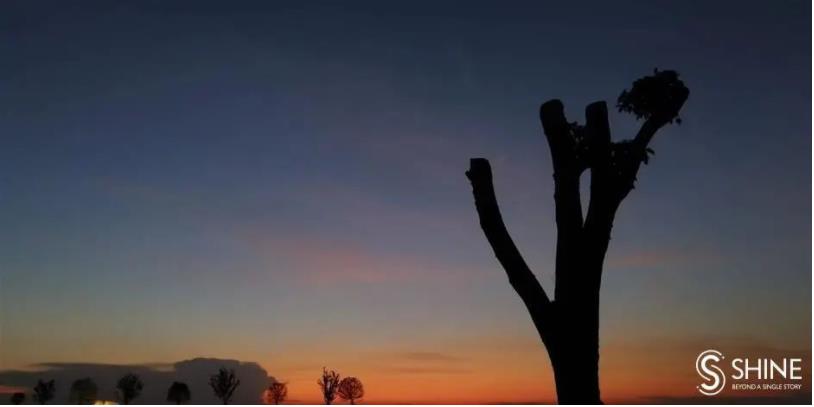
Over the weekend, I shared a picture of a beautiful night on WeChat, a social media site primarily used by friends and acquaintances. A friend asked me, "Are you traveling outside Shanghai?"
I casually snapped a few pictures of the peaceful nighttime scene while strolling through a village near my home in suburban Shanghai on Saturday.
Bats were darting over a river that reflected moonbeams, while a young mother taught her child to count stars by the river. A short distance down the country road, two girls were laughing and chasing each other around their bamboo-covered farmhouses.
It was about 9pm but the lights were not yet turned on. The moon was the only source of light for the girls who were playing among a symphony of croaking frogs in surrounding ponds.
My friend, who saw my posts, is a software engineer who works and resides in Suzhou, a thriving metropolis about 20 minutes by high-speed rail from Shanghai. She frequently travels back and forth between the two cities for business tasks, but she hardly ever visited Shanghai's countryside.
"No, I'm in Shanghai," I texted her.
"What a gorgeous twilight!" she exclaimed, referring to my photo. "I didn't expect it to be in Shanghai. I thought you must have traveled to a remote valley resort."
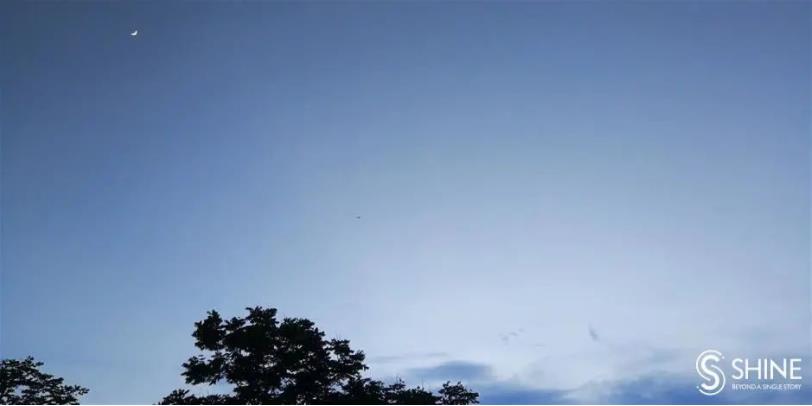

Lighting a city the right way
She is not alone in assuming that Shanghai's nights are usually well-illuminated. Many tourists who have visited the Bund would think likewise. Search the Internet with such keywords as "Shanghai, a city that never sleeps," and you will "harvest " myriad articles, including travelogues, that praise the city's "ever bright" sky. A recent story from a major media outlet regarded the well-lit nights of Shanghai as a symbol of economic strength.
Night illuminations have their merits. They make driving at night safer, for example. They can also lubricate many economic activities in the late hours or color a city's nightlife with a festive mood. But every coin has two sides. Too much light at night can be a source of pollution, which harms not only people's health but also the organisms of certain nocturnal animals and plants.
According to a recent article published on the website of the US-based International Dark-Sky Association (IDA), strong artificial lights can disrupt the nocturnal activity of amphibians like frogs and toads, especially their nighttime croaking, which is part of their breeding ritual.
Furthermore, sea turtles hatch at night on the beach. Their hatchlings usually find the sea by observing the bright horizon over the ocean, but artificial lights tend to draw them away from the ocean. According to IDA, in Florida alone, millions of hatchlings die this way every year.
As for human health, IDA cites the American Medical Association Council on Science and Public Health as saying that "glare from nighttime lighting" can cause discomfort or even disability. Indeed, sleep disorders and traffic accidents are just two examples.
In a recent report on light pollution in Shanghai, Xinhua news agency quoted an expert as saying that the city's sky was 170 times brighter in 2011 than in 1994. This was partly because of the bright lights from commercial signs, electronic screens and traffic surveillance cameras.
Xinhua also noted that the astronomical telescope on Sheshan Hill in suburban Shanghai was once the largest of its kind in East Asia, but in 2015, severe light pollution from the surrounding areas prevented it from being further used in scientific research.
Dark sky: then and now
I made multiple trips to the Sheshan area in 2012. Even though I am not an expert in astrophysics and have no understanding of how a scientific telescope operates, I could see that the luminous nights in the region had already begun to obscure the stars.
The skyline was decked with new, dazzlingly lit street lights as local investment accelerated in tandem with a surge of growing urbanization.
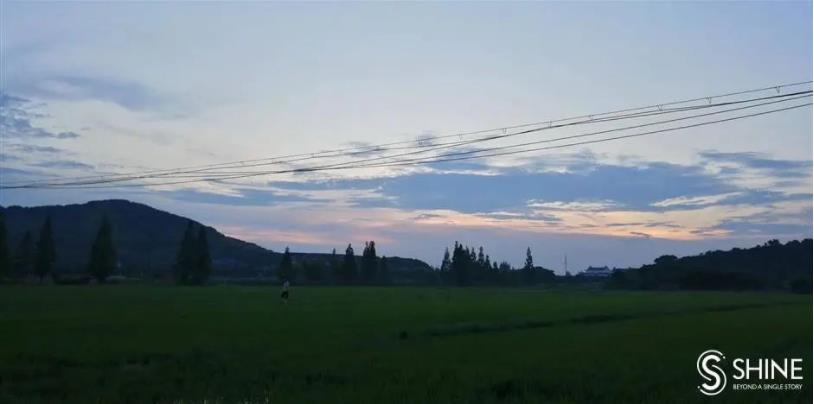
But things have changed for the better over the past decade, during which Shanghai has thrown its weight behind beautifying its vast countryside. With the closure of certain polluting businesses, which used to eat into the rural landscape, many rice fields have been restored or expanded, and a number of ecological corridors featuring forests and wetlands have been built.
Since 2014, more than 100 "beautiful villages" have sprung up in Shanghai. This has put the city on a new path for growth that is different from the urban sprawl fueled by the industrial revolutions in the West.
An urban sprawl lends itself to light pollution, while a rural revival helps bring back starry nights to people.
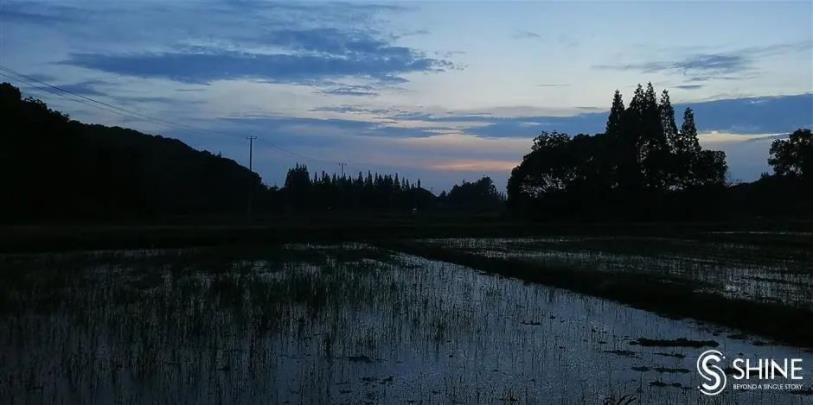
The idyllic village I visited on Saturday sits at the foot of Tianma Mountain, about 10 kilometers to the southwest of Sheshan Hill. The village, featuring rolling rice fields, borders a forest that covers an area of 10,000 mu (about 667 hectares).
I visited the forest a few years ago when it first took shape. This time, I found trees had grown taller and thicker, creating a giant "citadel" against the glare of road lamps, the only source of light in the vicinity.
I went to another town near Sheshan Hill on Thursday night. There, I ran into a middle-aged couple who came from a nearby town to enjoy the rural landscape in the twilight. They sat in a wooden pavilion near a group of field camps for stargazers, chatting their time away. At some moments, they even recited poems to each other.
That reminded me of German poet and novelist Joseph von Eichendorff (1788-1857), who dedicated a poem to a moonlit night. These lines impress me most as they link nature with one's soul:
The breeze was gently walking
through wheatfields near and far;
the woods were softly talking
so bright shone ev'ry star.
And, oh, my soul extended
its wings through skies to roam:
O'er quiet lands suspended,
my soul was flying home.
Similar to this, many people are drawn to the gradually reappearing dark sky over Sheshan Hill. They unwind and enjoy the sweetness of the night after a long day of labor.
Yang Xiaoming, a specialist in dark-sky preservation, told The Paper, a local news portal, that the Shenshan region will eventually become one of Shanghai's four main dark-sky zones; the other three are located in Chongming, Fengxian and Nanhui (in the Pudong New Area). Additionally, he proposed creating a dark-sky zone in the Yangtze River Delta, which borders Shanghai and the surrounding provinces of Jiangsu and Zhejiang.
Stars over a lake
Following his suggestion, I visited Yuandang Lake at night for the first time last week. I used to be there several times during the daytime to investigate how it was cultivating one of Shanghai's best low-carbon environments for work and life.
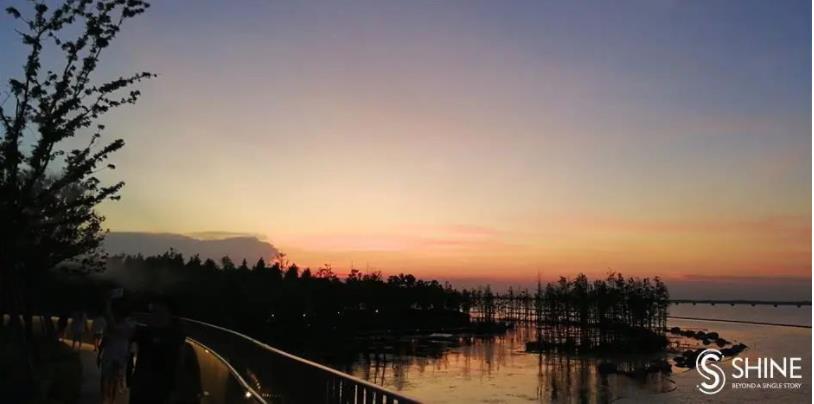
Shortly before 8pm, when the sun sent its last rays across the horizon, a few stars began to appear. My cellphone could not catch them, but I joined a number of stargazers in the "wow" moment when stars began to blink.
A photographer in his 60s set up his tripod and slowly adjusted his camera toward the dark sky.
"Are you sure you can shoot the stars?" I asked.
"Yes, I came here just for that," he smiled back. "I've been observing the sky for many years, and this is one of the best places for stargazers in Shanghai."
"Even if we cannot see stars on some nights, a dark sky free from artificial lights is still a luxury here, which you hardly find in a brightly lit downtown area," a man in his 50s told me as we chatted on a 600-meter-long pedestrian bridge over the lake, which links Shanghai's Qingpu District with Suzhou's Wujiang District. He came from Wujiang.
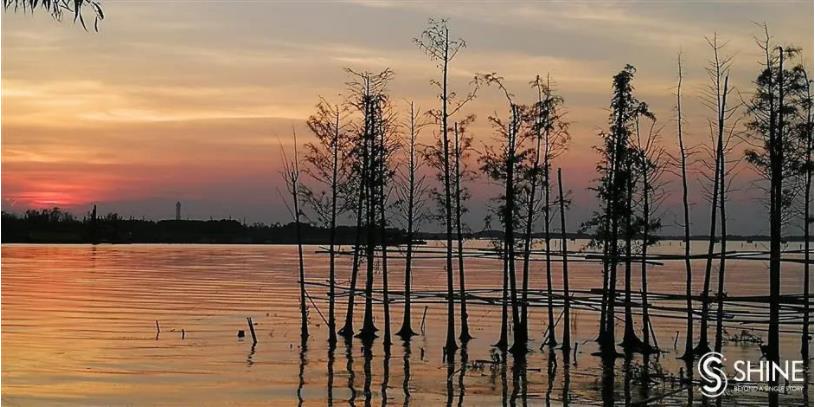
Creating dark-sky zones is simply one aspect of Shanghai's attempts to reduce light pollution and build a better living environment. In addition, the city is rewriting a decades-old environmental rule to strengthen its fight against light pollution.
Suggested changes include increased use of low-light or light-free security cameras, a prohibition on landscape laser lights directed at residential windows, and harsher penalties for those who emit light pollution.
While dark-sky zones are often meant for outlying districts, the amended laws will apply to every neighborhood in the city, guaranteeing that everyone has a "tender night."
American plant ecologist Lauren Trotta says in an article titled "Diversity in the Dark" that a big difference between daylight observations and those that occur after dark is the "trade-off between sights, sounds and smells." In other words, there are nocturnal animals and plants that one can hardly see, smell, or hear during the day.
"Observing biodiversity affords us the chance to feel like we have discovered something new," says Trotta.
It's not only about trying something new. Because a dark sky protects biodiversity in a unique way, we are transforming our city into a 24-hour wildlife refuge.
Source: Shanghai Daily
Application Status
| 04-16 | 21315227 | Processing |
| 03-12 | 21315226 | Processing |
| 09-26 | 21315225 | Processing |
Inquiry Status
| 02-29 | 02131558 | Received |
| 03-06 | 02131557 | Received |
| 11-14 | 02131556 | Received |
FAQ
Q: Q: Is there a place where I can get...
A: A: Log on to http://touch.shio.gov....
A: A: Log on to http://touch.shio.gov....
Q: Q: What is the easiest way to set u...
A: A: 1. Log on to http://touch.shio.g...
A: A: 1. Log on to http://touch.shio.g...
Q: Where can I get an English map of S...
A: English maps of Shanghai are availa...
A: English maps of Shanghai are availa...

